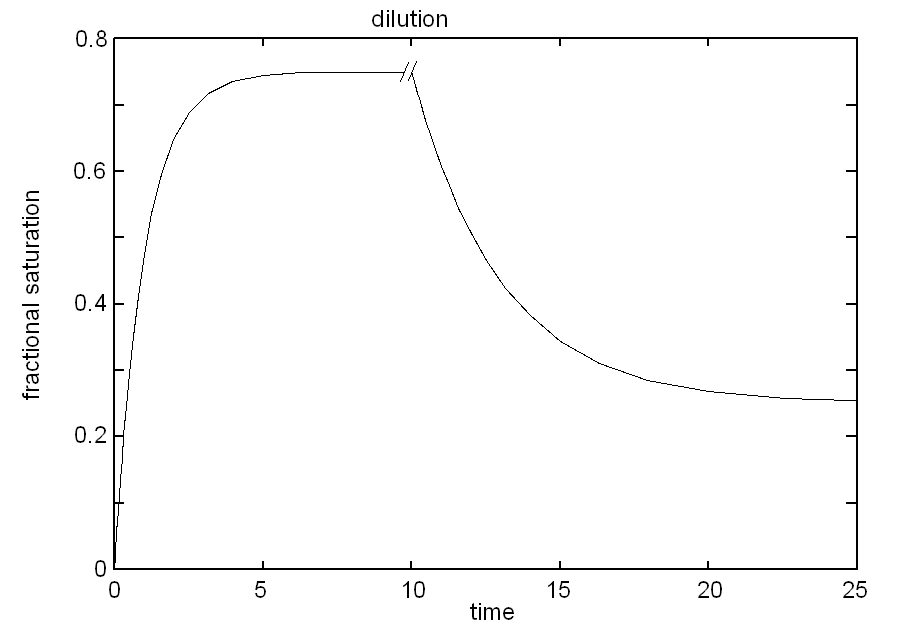Some enzyme inhbitors or other protein ligands require an incubation of minutes or hours to form the complex with their target. In these cases, one may doubt whether the complex is reversible, and may want to test reversibility by inducing the dissociation of the complex upon dilution. The question then arises whether the rate of complex formation is correlated to taht of dissociation of the same complex, i.e. whether a complex that forms in, say, ten minutes will also dissociate in ten minutes if diluted. The answer to this question is that the apparent pseudo-first order rate of dissociation upon dilution equals the apparent pseudo-first order rate constant of association divided by the square root of the dilution factor.
One may assume that the extent of dilution one may apply is in the order of 10- or 20-fold (e.g. the association is followed after mixing in a 1 mm cuvette and the dissociation in a 1 cm cuvette, after a 10-fold dilution; 1:10 is also the maximal volume ratio for a typical asymmetric stopped flow apparatus). The dilution experiment may thus be designed as follows: the protein/enzyme is mixed with its ligand at the concentration required to achieve 75% saturation, and the association time course is recorded. Then the misture is diluted to reach the ligand concentration required to achieve 25% saturation and the dissociation time course is also recorded.
The ligand concentration required to achieve 75% saturation can be calculated from the formula:
Thus, to record the association reaction one should mix the protein/enzyme with the ligand at a concentration three-times higher tahn the equilibrium dissociation constant.
When the reaction mixture has reached its equilibrium condition, it is diluted 9-times by addition of 8 volumes of ligand free buffer. The ligand concentration drops to Kd / 3 and the fractional saturation of the protein/enzyme, calculated with the above formula results 0.25. Thus the time course of ligand dissociation may be followed (see figure).

The time courses of approach to the equilibrium condition for both the association and dissociation processes are exponentials, governed by the apparent rate constant:
kapp, d = kd + ka 1/3 kd/ka = 4/3 kd
Thus the ratio kapp, a / kapp, d equals the square root of 9, the dilution factor used in this example:
For all practical purposes, the above formula demonstrates that in a dilution experiment carried out using a reasonably low dilution factor and ligand concentrations more or less symmetrically spaced around the Kd on a logarithmic scale, the dissociation process, though slower than the association process, occurs within a reasonably similar time window.
Home page